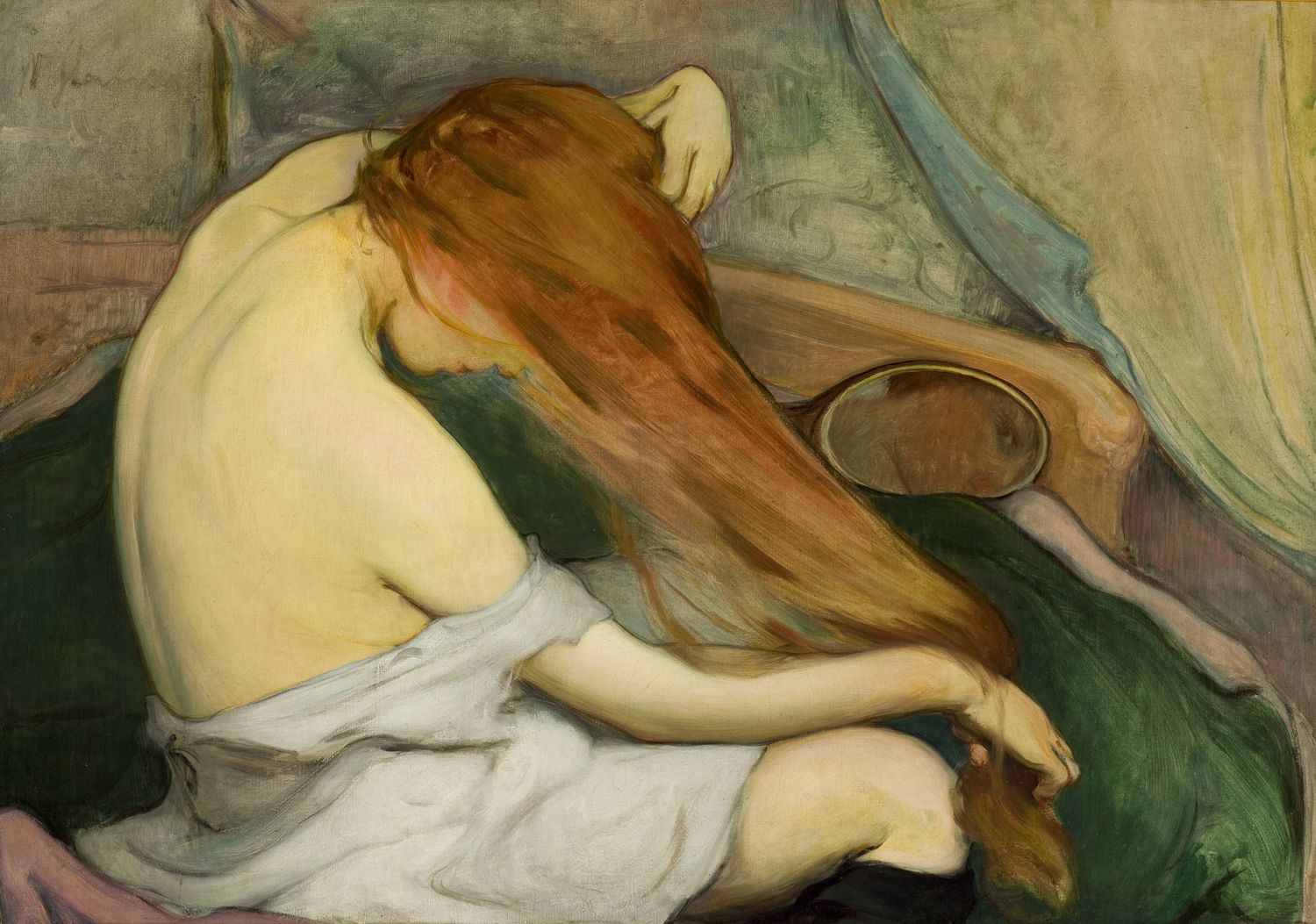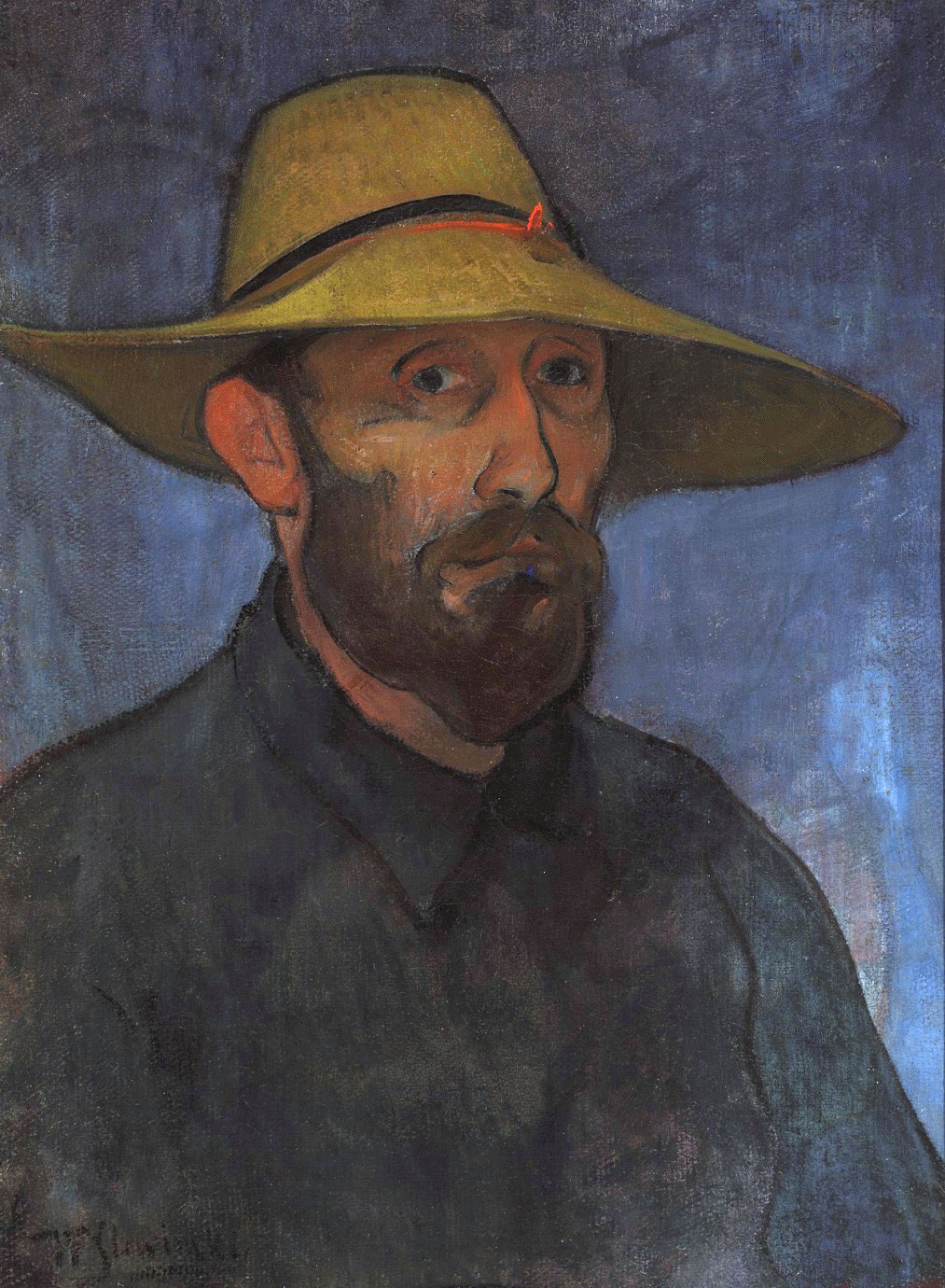Władysław Ślewiński is considered one of the precursors of Art Nouveau in the history of Polish painting. With his trip to Paris, in 1888, to study painting, he broke the Munich hegemony prevailing among Polish artists. The turning point in Ślewiński’s career was his encounter and friendship with Paul Gauguin and his relationships with the French group Pont Aven which favoured synthetism. Inspired by the paintings of Gauguin's circle, Władysław Ślewiński developed his own style based on a simplified form similar to synthetism, the use of fragmentary frame, corrugated contour lines; he also rejected unnecessary narration focusing on representing naturalness and seeking the truth. His calm, thoughtful and deeply reflective art became the expression of high artistic culture. He painted portraits, self-portraits, still life and landscapes reflecting his fascination with the harsh landscape of the Brittany coast. Woman Combing Her Hair is one of the most outstanding works of Ślewiński. The composition combines Art Nouveau form with Young Poland sensuality. Ślewiński showed his wife - Eugenia Szewcow, a Russian painter - in a cozy, almost intimate scene - sitting on a sofa in a shirt which is falling of her arms and combing her long, red hair. She is seen from behind, and only a small mirror next to the bed shows a fragment of her face and one of her eyes gazing at the viewer. Ślewiński interpreted synthetism, adopted from the artists from the Gauguin circle, by simplifying the form and content: the elimination of irrelevant detail and masterful harmonizing of the colour palette dominated by the reddish-brown colour of the hair, the white and gold skin of the model and the dark green fabric of the sofa. Another significant element introduced by the artist, was the stunning, soft, even Art Nouveau contour line of the back, hair and hand of the model.




Woman Combing Her Hair
oil on canvas • 64 x 91 cm
 Wladyslaw Slewinski
Wladyslaw Slewinski